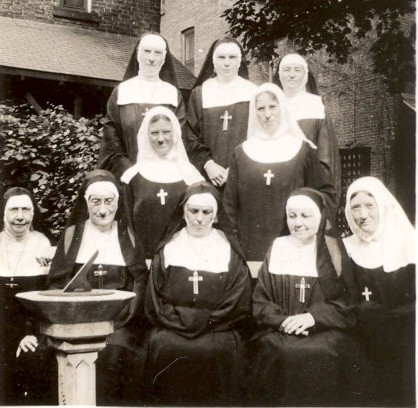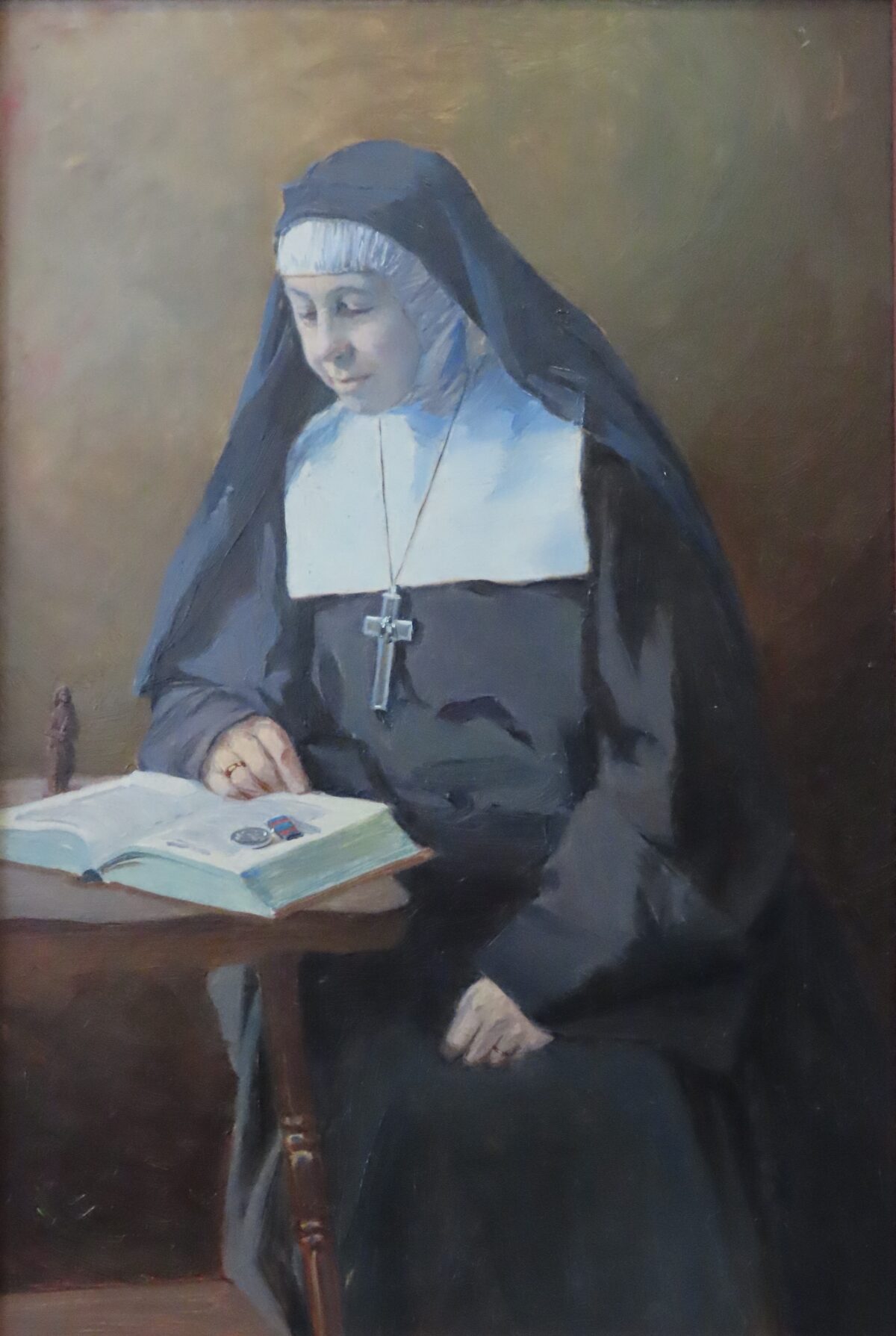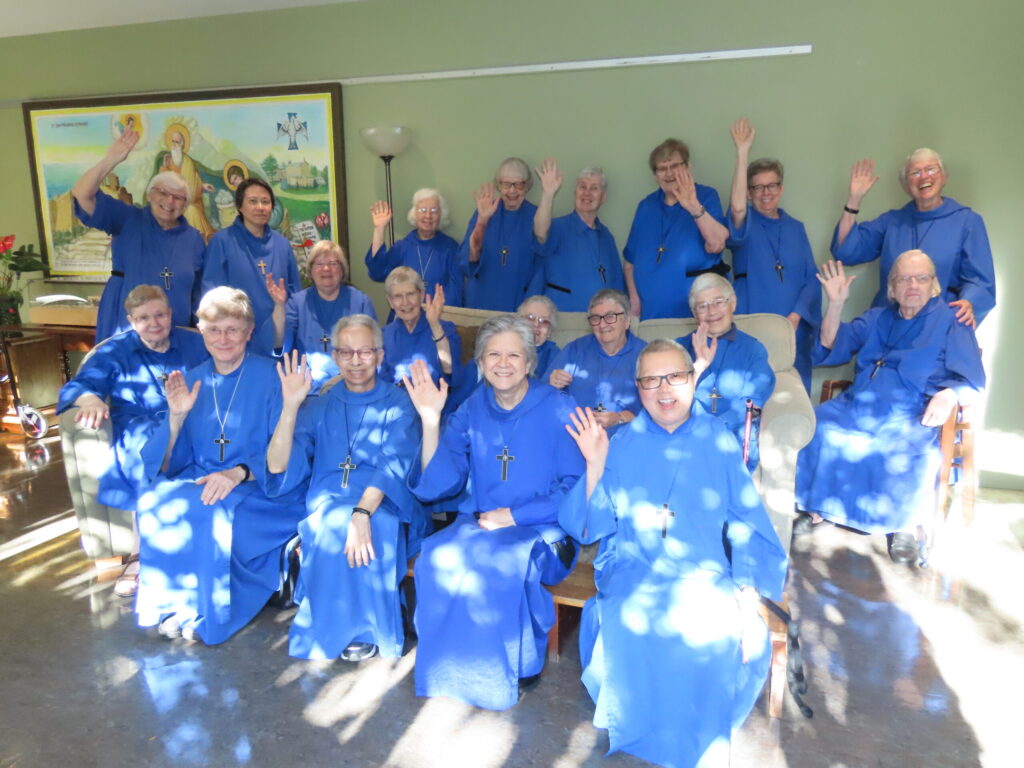


By Archbishop Colin R. Johnson, given on September 8, 2024 at the SSJD Convent.
+In the name of the Father, and of the Son, and of the Holy Spirit. Amen.
What a joy to be with you, Sisters, Associates, Friends, as we celebrate the 140th Anniversary of the Founding of the Sisterhood of St John the Divine, on this feast of the Birth of Mary, Mother of God, when Mother Hannah was professed and began the first Anglican Religious Community in Canada. What a history it has had. But “you can’t invite someone to be part of the past. You can only invite them to be part of the future.”1
Those unfamiliar with nuns often make assumptions about the religious life: quiet, pious, obedient, unassertive, unopinionated, unworldly, uninvolved, passionless. They are clearly mistaken! Courageous, challenging, questioning, engaged, passionate, intelligent, dedicated, resourceful and resilient would be my adjectives, and yes, prayerful, and compassionate. Watch out for the Sisters! They are a feisty lot!
It seems to me that these more realistic attributes are remarkably like those we see in Mary, whose birth we celebrate today. Not a demure, lowly maiden but, in the words of the Old Testament professor, Walter Deller, she must have been “one lollapalooza of a woman to have mothered such a son!”
Mary is courageous in embracing her vocation. She asks questions, challenges both the angel of God and Jesus, her son. She discerns before saying yes, even to God. She follows, misunderstands, ponders, seeks deeper understanding, continues to learn and grow in faith. She suffers grief as well as joy, anger and frustration, anxiety and pain, as well as hope and delight. She is filled with the Spirit at the Annunciation, and she is filled with the Spirit on the Day of Pentecost. She is the first and the foremost of the disciples of Jesus. And as the much-loved hymn infers, in heaven she now has the “exalted role… of leading all creation in its praise of the triune God.”2
Mary is truly obedient – obedient not in the subservient manner we so often regard obedience but in the full root-meaning of that word: she listens and pays attention. She pays attention to what is going on around her, listens to what God is up to, and discerns what she needs to do in response.
Mary epitomises faithful discipleship. And so, Mary is a model for each of us.
But is this an unobtainable standard?
The Church usually commemorate the death of those godly people, saints, through history as they enter fully into the promise of salvation. In the cases of only John the Baptist and Mary, do we honour their births, because of “the singular mission each had in salvation history.”3 Unlike John, there is no biblical record of Mary’s birth, but pious legends grew up around Mary and were recorded in the apocryphal Protoevangelium of James as early as the second century. There we hear of Anna and Joachim, her parents, her dedication in the Temple, her purity and perfection, her death and assumption into heaven. The nature of her son was thought to require a special character of the mother, fitting her title as Theotokos, God-bearer, Mother of God Incarnate, and so Christian imagination has supplied suitable honours and great devotion.
And yet I think that these understandable pious intentions actually have diminished one of the chief cornerstones of our faith: it is the ordinariness not the extraordinariness of Mary that is so critically important. She is a peasant girl, in an remote place, in a subjugated nation, a person of no position of power, fame, or influence. It is Mary’s humanity, her real humanness, that is the gift she brings to the incarnation. God wills to engage human beings fully in the work of salvation: you, me, Mother Hannah, all of us, not those set apart as exceptional, but finite, limited, flesh and blood, earthy creatures. Not superheroes or demigods, but us. Here is the incarnational principle at work – the sacramental action of the living God who meets us here today. Consider our most constitutive, sacred acts of worship. In Baptism, ordinary tap water becomes the means of washing away sin and rebirthing us into new life in Christ. In Eucharist, It is ordinary bread, from wheat some farmer has planted and reaped, some miller has ground into flour, some baker formed and baked into a loaf, some merchant bought and sold. Fruit of the earth and work of human hands that will become the bread of life. It is ordinary wine that comes in a bottle from ordinary grapes grown on a vine and harvested by fieldworkers, crafted by a vintner, bought and poured into a chalice. By the prayer of a human community and the breath of the Holy Spirit, these everyday things become for us the Body and Blood of Christ. The ordinary stuff of life becomes the life-giving, life-transforming presence of God in our midst. Ordinary bread, ordinary wine, ordinary water, ordinary oil, ordinary words, ordinary people, all become conduits of God’s saving presence, and the building materials of the kingdom of God.
The great contemporary Benedictine liturgist, Dom Godfrey Diekmann, writes: “What difference does it make if the bread and wine turn into the Body and Blood of Christ and we don’t?”
Mother Hannah and the Sisters who formed a community of prayer and useful service, personal sanctification and active charity have sought to be and live as the Body of Christ for the world. To quote Fr Stephen Reynolds, “…the quest for ‘personal sanctification’ intersected with works of ‘active charity.’ People cannot give what they themselves do not have. In Mother Hannah’s view, the Sisterhood of St. John the Divine could minister the love of Christ to others only if they themselves practised the love of Christ in their own lives. Hence, the contemplative activities of prayer and worship had priority over the active works of nursing, teaching, and administration, because prayer and worship allowed the Sisters to possess the very love which they sought to give.”4
Gathered in the chapel today, we see the physical and spiritual heart of this Community. Glance around. The hearth, symbol of hospitality and warmth. The font, the place where our life in the Body of Christ begins. The ambo, the place of proclamation where the word of God is addressed to our life. The choir, where the praises of the Almighty, the lamentations of our hearts and the intercessions on behalf of the world are prayed. The altar, where we are nurtured and fed by the very life of Christ himself, and then sent out into the world to love and serve the Lord.
Ordinary people, united in one body with one abiding mission, empowered by the promise that Christ will be with us always, become by grace extraordinary ministers and ambassadors for his purposes.
As this Community celebrates its 140th anniversary, I’d suggest that the Feast of the Birth of Mary is an especially fitting occasion to mark it . Anniversaries let us reflect on the past to see the foundations on which to build our future. You can’t invite people to be part of the past. But what about the future? The character of Mary should not overawe us as an unreachable ideal. Rather, let her real faith, her daring obedience, her questing discipleship, her engagement with the world around her in all its pain and glory, ever conscious of the abiding presence of the God of her ancestors, her resilience and her joyful hope inspire us in our ongoing personal and communal mission. It is my conviction that this is precisely what Mother Hannah envisioned for her community and what, at its best, the lives of the Sisters of St. John the Divine have demonstrated in the past and continue to display today. And it is an eminently important life and mission that we are invited to aspire to and embrace for the future, for the sake of the Gospel and for the life of the world.
And let us say,
Amen!
Footnotes:
1 Brian Stoffregen, Exegetical Notes – Crossmarks, commentary on John 1:14.
2 Stephen Reynolds, For All the Saints: Prayers and Readings for Saints’ Days, p. 634
3 Birth of Mary, Wikipedia
4 Reynolds, p. 440
